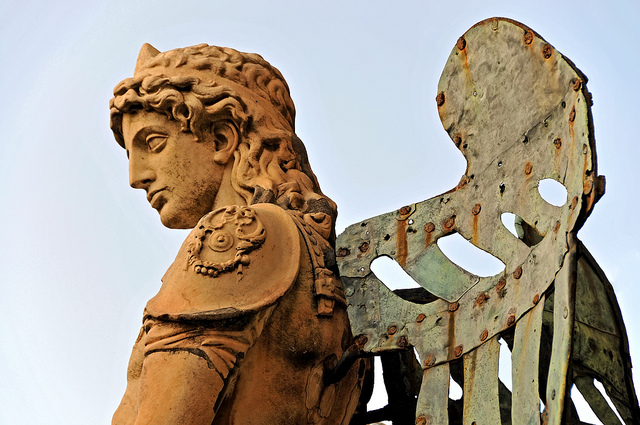
I confess I don’t even know how to start a blog post. Blogs are typically opinion pieces and angelology; my research field isn’t about giving one’s own opinions.
Approaching angelology from the direction of history requires factuality – as much as one can talk about factuality in the case of angels. The first rule of angelology thus remains that you don’t chit-chat about angels or else you get confused with a preacher, which might compromise the credibility of your research. Having said that, the Rome Art Program’s idea of including angels in their blog sounded charming, so I decided to give it a clumsy go.
Where shall we begin…? Hands down, the Castel Sant’Angelo or the Castle of the Holy Angel, is the first thing that comes to mind when talking about angels in Rome. The Castle; crowned by Archangel Michael’s robust statue, dominates the Roman skyline, artistic, touristic and local itineraries as well as the list of my personal favourite sights and hideaways.
I noticed that few people even know why the Castel Sant’Angelo is called the Castel Sant’Angelo. Even locals often believe it is the Castle of the Holy Angel as there are so many angels around; Verschaffelt’s Saint Michael on top being accompanied by Bernini’s angels on Ponte Sant’Angelo (Bridge of the Angels) below. No, the Castel Sant’Angelo isn’t called Castel Sant’Angelo because angels gather there. The angels gather there because it is the Castel Sant’Angelo.
The origins of the name go back to 590, when the plague was raging in Rome and Pope Gregory the Great somehow came up with the idea that a city procession might act as a remedy. Nonetheless, the massive procession he organized came to a sudden halt at the mausoleum of the emperor Hadrian, when the Pope raised his eyes and had a vision.
According to Gregory’s own recollection of the events, he saw a gigantic angel in full armour sheathing his sword on top of the mausoleum. The Pope recognized Archangel Michael in the armoured angel and understood the sheathing as a sign that the plague would now stop. And so it was. The plague ended shortly after the events.
Nobody else recalled seeing anything on top of Hadrian’s monument, yet following the events the plague indeed stopped. Historical research offers a range of explanations, but this doesn’t change the fact that the halt of the epidemic and the pope’s unique vision reportedly coincided.
Ever since then, the complex has been called the Castel Sant’Angelo; the name commemorating the event as well as the angel statues on top and below. Montelupo’s Saint Michael statue was replaced by that of Verschaffelt in 1753, his angels adorning the Ponte Sant’Angelo by those of Bernini in 1669.
The history of these angels could maybe fill another blog post, but for now I guess I have managed to reach the requested 200 words. Yay!
(I thank my friend Micah Tilman for his comments on the first version of my first ever blog post, as well as for pointing out I cut it short like the archangel cut short the plague… I promise him a more flamboyant attempt next time.)
Edina Eszenyi, Art Historian
Main Image: Courtesy of Dennis Jarvis via Flickr